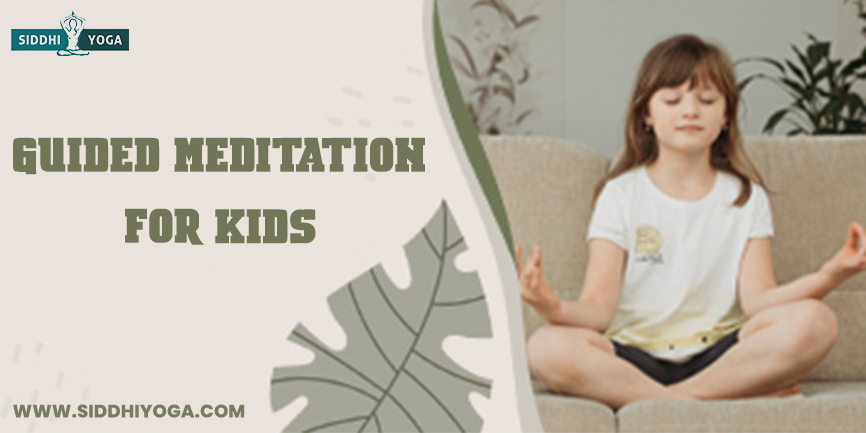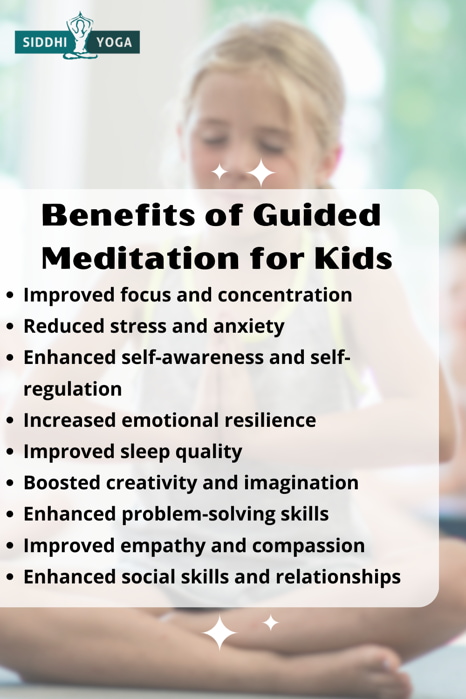
Discover how guided meditation for kids can help improve their sleep, focus, and emotional health with some of the best scripts to get started with.
Introduction
Introducing kids to meditation is a very helpful and creative way to teach them to notice, listen to, and take care of their minds. We would make an effort to teach children how to take care of their body, personal hygiene and nutrition, often forgetting that their mental and emotional health is just as important.
Meditation can help children regulate their sleep, boost focus & concentration and introduce them to a space of calmness and security they will be able to go to for the rest of their lives.
Here, we will introduce kids meditation, some benefits and tips on creatively teaching meditation tools.
Meditation for Kids
Every parent knows that getting their kids to stay still and explore silence can be challenging. Finding the best way to teach kids meditation is a journey that might take several tries, but it is worth the effort. Keeping the meditation practice adjusted to a younger audience’s creative and active mind is key.
First, let’s get back to the basics of what meditation is about. Meditation is a connective practice of the body and mind, focusing on initiating a space of calmness and self-awareness. It is known to link the interactions between the brain, body and mind with our reactions to thoughts and stimuli. That would lead us toward an energizing and peaceful state of mind.
Meditation is a free and personal practice, meaning that each person may experience and practice it. There is no good or bad meditation; it will be important to remember this when introducing the practice to children and younger audiences.
Some of the basic elements of meditation are:
- Finding a quiet and safe environment.
- Choosing a comfortable pose to relax the body.
- Working with focus and concentration.
- Being open to experiencing all sensations and thoughts.
The principles of meditation for adults and kids are the same, with some adjustments for kids to consider their age and experience. First of all, the meditation period will be shorter and more flexible. Adults can stay focused and still for longer, while kids are more easily distracted. We need to give them enough time to grow their ability to meditate naturally without forcing it.
Secondly, meditation will be most appealing to the younger audience, even toddlers, if it is introduced in a fun, joyful and engaging manner. This can involve using their favorite toy, drawing, storytelling and movement.
With this in mind, it is also important to remember that our kids are constantly learning and changing. Therefore, the way we practice meditation with them will also vary and transform on the go.
Guided vs Unguided Meditation For Kids
Whether we are an adult or a child, guided meditation for kids is a great way to learn and get into regular practice. Guided meditation is a practice in which we follow a teacher’s or guide’s instructions. There are usually one or a few specific focus areas in any meditation session. For example, scripts are prepared for calming the mind, body relaxation, anxiety, good sleep, etc.
A guided meditation for kids will be similar in structure to a guided meditation for adults, but we can build in some creative elements. For example, we can include storytelling, expressive movement, rhyming and singing together with conscious breathing and body awareness practices – all introduced in a safe, calm and fun environment.
Unguided meditation is a significant challenge since kids need to develop more discipline. We might notice that when joining a meditation practice at the beginning, children will follow the common routine of the family. Later, they will find the need to try meditating on their own. This is a very personal process, so there is no need to rush or push anything. After all, children tend to listen to their body and mind more intuitively and will know when they are ready to practice unguided meditation.
Sleep Meditation For Kids
One of the ways we can teach younger kids the basics of meditation is by creating a morning and evening routine. Sleep meditation for kids can be introduced in the form of a story, a gentle breathing visualization, a body scan or gentle bedtime movement.
Regularity, repetition, and a family bedtime meditation routine are key in teaching children to relax before sleep. Meditation is generally a practice in focus and mind energizing; therefore, before bed, we should remember to take a slightly different approach. Gentle focus and allowing concentration to fade away softly will be an important part of bedtime relaxation for kids.

Picking a Guided Meditation Script For Children
You can choose from plenty of instructive sleep meditation for kids scripts and stories online. You can also go with your imagination and create a sleep meditation script for our kids on the spot.
Below you will find a few sleep-guided meditations for kids:
Guided Meditation for Kids Audio – Your Secret Treehouse
Sleep Meditation for Kids – WOBBLY JELLY LAND Bedtime Sleep Story for Children
Guided Meditation for Children – ONE PERFECT MOMENT – Mindfulness for Kids
5 Minute Butterfly Meditation for Kids (Mindfulness for Children)
Children’s Guided Meditation For Deep Sleep – THE SLEEPY SLOTH – Bedtime Sleep Story for Kids
Addressing the Inner Child in Adults
As adults, we often forget the inner child that will always be a part of us. We are just grown-up kids who explore life through learning experiences, leading us to where we are now.
Our inner child is that voice and self-awareness which connects us to how we see ourselves and the reality around us. We have been taught by life experiences how to react and respond to different situations, and even though we might be full-grown adults today, we still connect deeply to how we have been raised and taught by our carers and relationships.
Addressing the inner child is accepting and listening to what the younger version of ourselves has to say. It is a profound work and practice that may help us better understand ourselves and find peace and tranquility in our space.
Here you will find a few recommendations on how to connect to your inner child:
- Practice self–awareness and inner child-guided meditation
- Use visualization practices
- Follow an inner child-guided meditation script
- Go back to a hobby you had when you were little
- Have conversations with your inner child
- Write a letter to your younger self
- Practice self–acceptance and care
- Avoid judging or punishing your inner child
- Allow your creativity to be free
- Learn a new skill
The Bottomline
Teaching your kids how to meditate and practice calmness and self–awareness is a beautiful process for the whole family. You will share a personal and connective skill with your loved ones and guide them toward discovering life and peace of mind. Connecting with your children through guided meditation may also lead you to your inner child – finding and acknowledging this space can be a beautiful way to dive deeper and know yourself on a different level.
Suppose you are interested in learning more about meditation and how it can become helpful and supportive throughout your life. In that case, we invite you to join our online meditation course Calm Your Spirit, Sooth Your Mind.